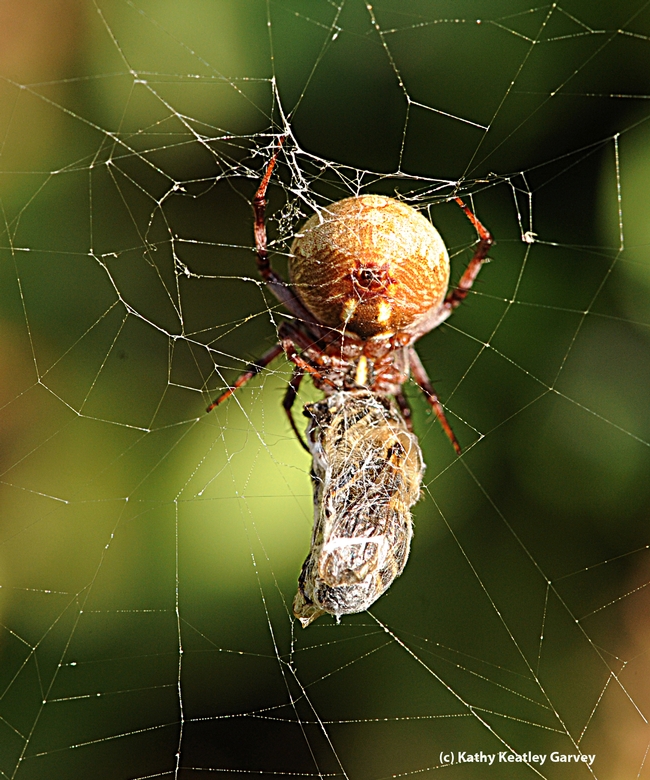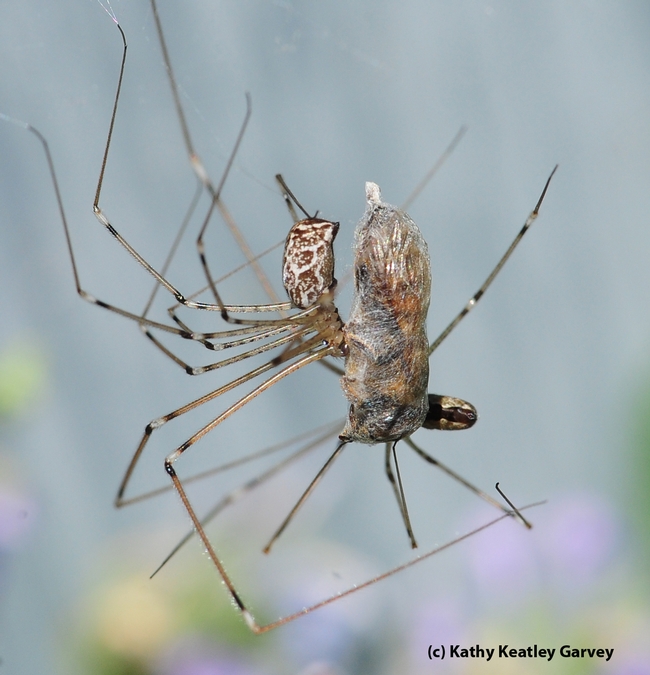The thing about predators and prey is that it's the nature of things.
Take spiders. The many different species have different methods of catching, killing, confining and eating their prey.
Have you ever seen an orbweaver snare a honey bee in its web and then wrap it in silk blankets? The spider injects the bee with poison, feasts on it and/or pulls the carcass out of sight for later consumption.
‘Most spiders have toothed chelicerae, which they use in combination with their movable fangs to mash their prey into a small unrecognizable mass,” write authors Charley Eiseman and Noah Charney in their book, Tracks and Signs of Insects and Other Invertebrates: A Guide to North American Species (Stackpole Books).
"Prey killed by hunting spiders such as tarantulas and wolf spiders have no silk on them, whereas orbweavers swaddle their prey with a thick white layer of white silk," they point out. "Jumping spiders and others eating soft-bodied flies may leave only the wings behind."
Those orbweavers work fast. They indeed "swaddle their prey with a very thick layer of white silk," so thick, so strong and so sticky that there's no escape.
That's the nature of things.
Attached Images:

